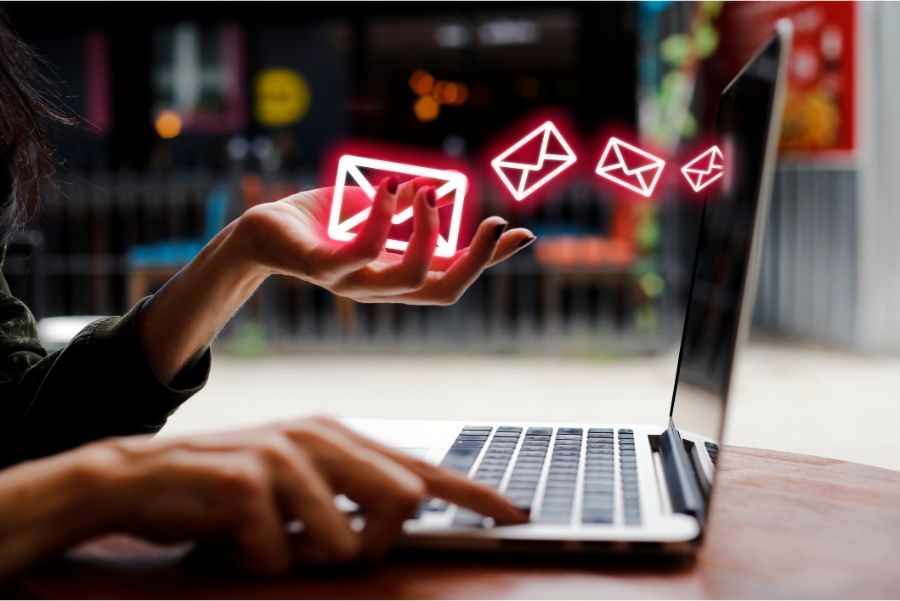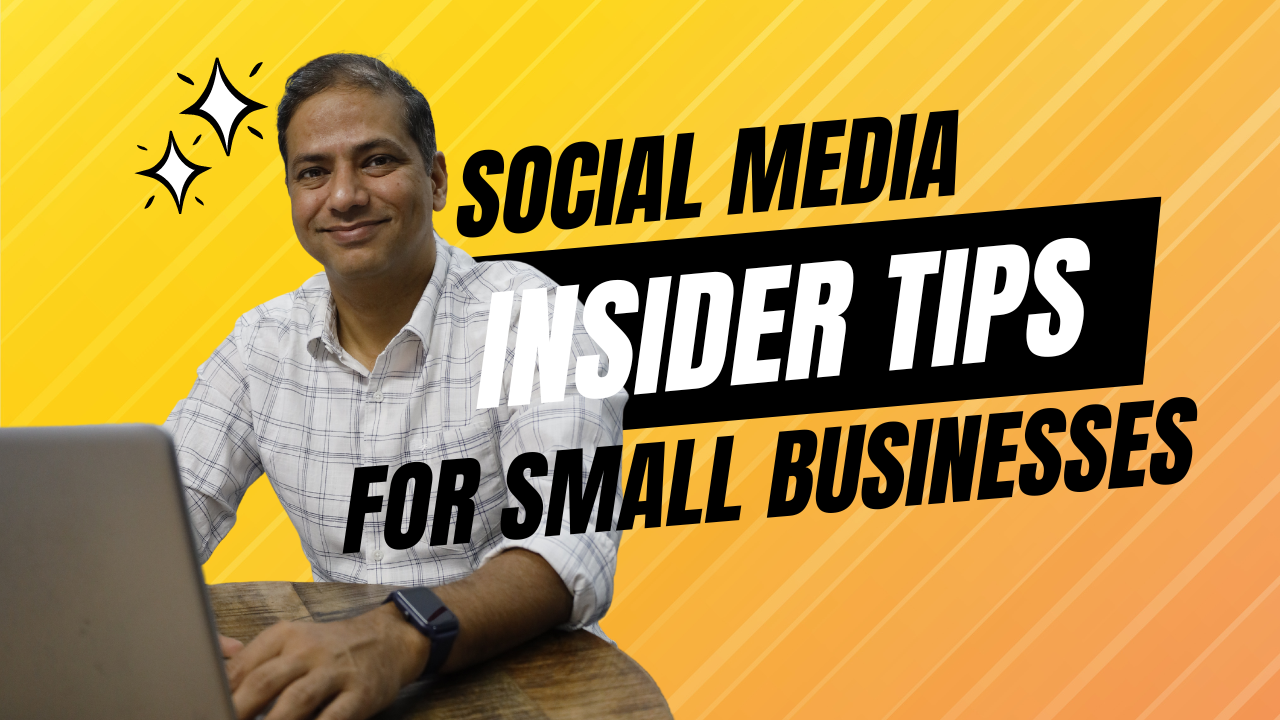Strategies for building an effective email marketing list and list building

There once lived two ambitious business women named Neha and Richa in a thriving digital marketplace. Both were keen to establish themselves after starting their own web enterprises. Neha heavily invested in eye-catching advertisements and relationships with influencers because she believed in the effectiveness of social media marketing. Richa, a smart marketer, recognised the potential of email marketing in the meanwhile.
She worked hard to develop a devoted subscriber base and foster connections through personalised emails. Over time, Richa email marketing succeeded but Neha’s social media campaigns found it difficult to stand out from the crowd. Email marketing’s personalised touch and direct communication proven beneficial, increasing engagement, conversions, and client loyalty. The success of Richa’s firm served as a timeless lesson for us about the importance of email marketing.
However, the success did not come overnight. The young lady has to implement many unique e-mail marketing strategies to be where she is. Here is a roadmap that can give you an idea about her success and guide you to design a roadmap for yourself as well –
Firstly, she focused on building an effective marketing list that is crucial for the success of the campaigns.
List Building: Strategies for building an effective marketing list
- Make sure subscribers voluntarily choose to receive your emails. Use opt-in forms that are transparent and explicit and specify the kind of content recipients will receive.
- Provide worthwhile incentives Offer an incentive to subscribers in exchange for their email addresses, such as a discount, access to premium content, or a free resource. This motivates people to subscribe to your list.
- Based on their hobbies, demographics, or previous interactions, divide your subscriber base into various segments. This enables you to send emails that are better targeted and personalised, increasing engagement.
- Promote your email list through a variety of venues, such as your website, blog, social media, and events, to increase your chances of getting subscribers. Use landing sites, pop-ups, or lead generation forms to collect email addresses.
- Make content that is compelling. Send your subscribers entertaining, relevant, and high-quality material. This promotes loyalty, reliability, and trust, which encourages receivers to continue subscribing and forward your emails to others.
- Keep your sign-up forms concise, accessible, and responsive to mobile devices. To decrease friction and boost conversions, only request a name and email address at first.
- Utilise social proof by showcasing endorsements, reviews, or social media followers to increase credibility and trust. When people witness others interacting favourably with your brand, they are more likely to subscribe.
- Frequently purge your list. To maintain a high email deliverability rate and raise overall engagement metrics, remove inactive or disengaged members from your list.
- Encourage referrals and sharing. Encourage subscribers to share your content with their networks by including social sharing buttons in your emails. Provide rewards for referrals from current customers who bring in new customers.
- Ensure compliance with data privacy laws. To gain your subscribers’ trust and protect their privacy, make sure you abide by pertinent data protection laws, such as the GDPR or CCPA.
Campaigns strategies: Best practices for creating successful email marketing campaigns
Similarly, creating successful marketing campaigns require a well articulated strategy. Here is what you need to do.
- Clear campaign objectives-Establish clear objectives that can be measured for each email campaign. Clear objectives will help you design targeted and efficient campaigns, whether your objective is to increase revenue, increase website traffic, or nurture customer relationships.
- Recognise your audience –Based on demographics, hobbies, and previous actions, segment your email list. By adjusting your content to different audience segments in this way, you may raise engagement and relevance.
- Create eye-catching topic lines-Use succinct, attention-grabbing subject lines in your emails to draw readers in and persuade them to open them. Keep your language free of spam and be honest about the contents.
- Content customisation for your target audience –Personalise your content by adding recipient names, pertinent offers, or tailored advice based on their interests to your emails. Personalization boosts interaction and gives subscribers a sense of value.
- Design creatively that is responsive to mobile devices –Make use of brand-consistent templates that are aesthetically pleasing. As a large percentage of subscriber’s access emails on smartphones or tablets, make sure your emails are mobile-friendly.
- Concentrate on useful material –Offer your subscribers content that is pertinent to them, is valuable, and solves their needs by offering advice, solutions, or relevant information. To keep users interested, mix promotional information with informative or amusing content.
- Include a call to action (CTA) button –These buttons are clear and appealing to encourage your readers to take action. Make it simple for subscribers to click through to your chosen location by using language that is action-oriented.
- Test and improve –A/B test several aspects of your emails, including the subject lines, designs, CTAs, and sending times. To increase performance, analyse the outcomes and modify your campaigns in light of the information.
- Automate when you can –Set up triggered email campaigns using automation technologies depending on particular events or activities, such as welcome emails, cart abandonment reminders, or tailored follow-ups. Automation offers timely and pertinent notifications while saving time.
- Keep to a regular schedule-Establish a regular sending schedule to maintain your brand in subscribers’ minds without annoying them. Regular communication fosters engagement and trust.
- Respect email policies-Learn about the rules governing email marketing, such as the CAN-SPAM Act or the GDPR, and make sure your campaigns adhere to them. Give subscribers simple ways to opt out while respecting their preferences.
- Keep up with platform updates-Social media sites often roll out new functions and enhancements that can improve your marketing efforts. To keep ahead of the competition, learn about platform updates and experience new features.
Tips for optimising your email marketing campaigns for conversion
Unlocking the true power of email marketing is like discovering a hidden treasure chest of conversions. So, how can you optimise your email marketing campaigns to unlock that treasure trove? Let’s dive in and explore the secrets.
- Create subject lines that are captivating and leave recipients wanting more. Consider these to be the doors to your email kingdom’s gates. Be clever, enticing, or personal in any way that encourages subscribers to click and investigate.
- Personalise, personalise, and then some more! Consider the preferences, actions, and previous interactions of each recipient while writing emails. Identify them by name, make product recommendations based on their browsing history, or acknowledge their accomplishments. Your emails will feel more like a one-on-one discussion as they become more personalised, which will increase conversions and foster trust.
- It’s time to start writing engrossing material that keeps people reading from start to finish. Be succinct, interesting, and useful. Make every word count, whether it’s in instructional information, exclusive offers, or gripping storytelling. Your objective is to provide people a memorable experience that makes them want to act.
- Remember the influence of strong pictures. Include attention-grabbing design elements, bold colours, and eye-catching photos in your communications. In addition to standing out in a busy inbox, a visually beautiful email improves the user experience. Always keep in mind that a picture speaks a thousand words, and in email marketing, it can lead to even more conversions.
- Timing is crucial. Consider the best days and times to send your emails, when your audience is most likely to respond. To determine the optimal sending time that results in the most conversions, experiment with different sending times and examine open and click-through rates. The perfect email timing can make all the difference in grabbing readers’ attention and motivating them to take action.
- Don’t forget about automation when we’re talking about timing. Create email campaigns that are activated in response to certain events or activities. Send out personalised recommendations based on previous purchases, re-engage customers who have abandoned carts, and extend a warm welcome to new subscribers. Automation guarantees that the appropriate message is delivered to the appropriate person at the appropriate time, fostering relationships and increasing conversions.
- Make sure that your emails are mobile-friendly. Delivering a flawless mobile experience is essential given that the majority of consumers access emails on smartphones. Make sure your emails are responsive, have simple-to-tap buttons, and have obvious graphics. Your message will reach your audience wherever they are with a mobile-friendly email, improving the likelihood of conversions while they are on the road.
- Remember to evaluate, iterate, and optimise. Keep an eye on crucial statistics like open rates, click-through rates, and conversions. Investigate the statistics to learn more about what’s effective and what isn’t. Utilise data-driven decisions to hone your tactics, try out fresh ideas, and continually enhance your email campaigns for the highest conversion rates.
Some Facts about E-mail marketing
- Conversion rates- The normal range of conversion rates for email list sign-ups is 1% to 5%. Accordingly, you should anticipate that 1 to 5 website visitors out of every 100 will sign up for your email list.
- Placement of opt-in forms-Strategically positioned opt-in forms on high-traffic pages of your website, like the homepage or blog sidebar, can result in conversion rates of 2% to 5%. These figures, however, may change depending on the design, visibility, and value proposition made available.
- Effectiveness of lead magnets-Lead magnets can convert between 20% and 50% of visitors into email addresses. This means that 20 to 50 out of 100 visitors who see a lead magnet offer may opt to give their email addresses in exchange for the offer.
- Double opt-in confirmation-Although it can cause a modest decline in conversion rates, using a double opt-in process can assist ensure higher quality members. Expect confirmation rates between 20 and 40 percent, which means that 20 to 40 percent of members will successfully complete the double opt-in procedure.
- Promotion on social media-The conversion rate for luring email sign-ups via social media campaigns might vary significantly. Conversion rates between 1% and 5% are typically thought to be appropriate, but more aggressive targeting or alluring offers may result in greater conversion rates.
- Conversion rates for landing pages-Conversion rates might range from 10% to 30% for certain landing pages created to collect email addresses. This indicates that between 10 and 30 of every 100 visitors to a landing page may decide to join your email list.
- Impact of segmentation-Using demographic, interest, or behaviour-based segmentation to divide your email list can increase open and click-through rates as well as overall engagement. Email campaigns with segments can obtain open rates that are 14.31% higher than non-segmented efforts, according to studies.
- Unsubscribe rates– Depending on the calibre of your content and the frequency of your emails, unsubscribe rates can change. The typical unsubscribe rate is between 0.1% and 0.5%, which translates to 1 to 5 unsubscribes for every 1,000 subscribers.
One tactic has endured over time in the huge world of digital marketing, where trends come and go i.e. email marketing. Its strength resides in its capacity to establish personal connections with your audience, foster bonds, and produce quantifiable outcomes. While social media may briefly grab people’s attention, email marketing wins them over and motivates them to take action.
Email marketing is a powerful tool because of the personalised touch, the personalised messages, and the capacity to give pertinent content. So, as you navigate the digital landscape, remember that amidst all the noise, a well-crafted email can still find its way into the hearts and minds of your audience, making email marketing an indispensable tool in your digital marketing arsenal.





